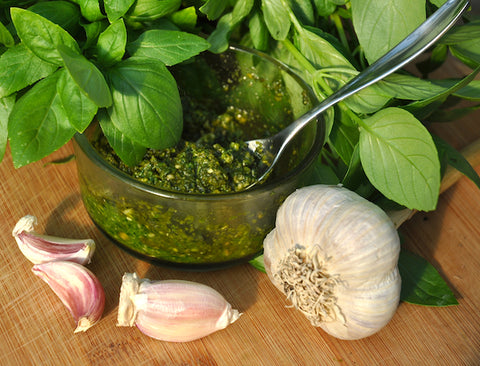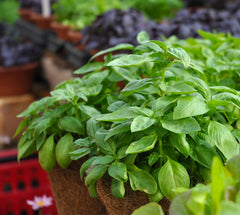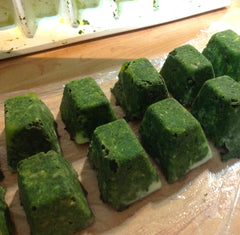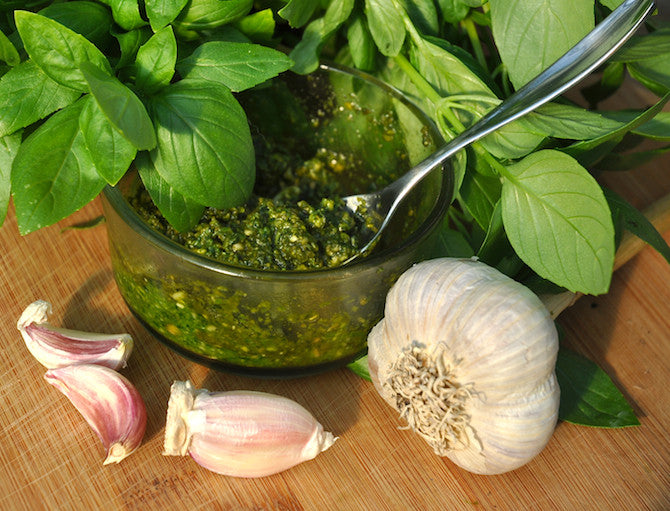
Ev has been busy in our kitchen making heaps of pesto from Genovese basil, which is at its peak right now. The aroma is so good as to be almost overwhelming! And the green chlorophyll-ly colour that has painted our kitchen cutting boards is just so perfectly "late summer". With this delicious pesto on my mind, I thought it might be helpful to share a few tips that we have gathered from all of the pesto makers we hear from at the greenhouse:
1) Don't go straight for the food processor. Basil is delicate and can become "ugly" quite fast. Much better to pre-chop all of your ingredients and then do a light blend to finish.
2) Taste as you go. It can take a little practice to find the perfect balance between basil, garlic, pine nuts and parmesan cheese. Garlic is especially tricky since different types will have varied pungency (and there is a wide range of opinions on just how much garlic = perfection!). You can always add a little more of a particular ingredient, but it is hard to retreat.  3) There isn't just one "pesto". In fact, pesto can take on a whole new meaning when prepared with any number of feature ingredients such as cilantro, parsley and kale. Can't have dairy? Nutritional yeast can be substituted for parmesan for a fully vegan option.
3) There isn't just one "pesto". In fact, pesto can take on a whole new meaning when prepared with any number of feature ingredients such as cilantro, parsley and kale. Can't have dairy? Nutritional yeast can be substituted for parmesan for a fully vegan option.
4) Pine nuts are expensive... Classic pesto includes roasted pine nuts, but these are definitely a very pricey foodstuff. Walnuts are a popular alternative, and for many gourmands the results are completely satisfying. But don't stop there: cashews are another perfect substitute for the pine nuts (the fact that cashews are a cheaper option is telling of just how pricey pine nuts are! By the way, one of the few pine trees that produces edible pine nuts grows right here as a landscape tree in Manitoba, the Swiss Stone Pine).
 5) Freeze your pesto. Home made pesto can be kept for a short time in the refrigerator, but ideally pesto is frozen in ice cube trays, preserving "doses" that can easily be used through winter.
5) Freeze your pesto. Home made pesto can be kept for a short time in the refrigerator, but ideally pesto is frozen in ice cube trays, preserving "doses" that can easily be used through winter.
One important tip is that basil tarnishes easily, turning an ugly brown when exposed to air. You can prevent this by topping each ice cube with a small layer of straight olive oil.
Hope these tips can help get you going or find best success with your pesto creations.
Do you have any tips or ideas to share? Photos of your amazing harvests being turned into a winter's worth of goodness? Feel free to share these over on our Facebook site.
Happy Harvest!







